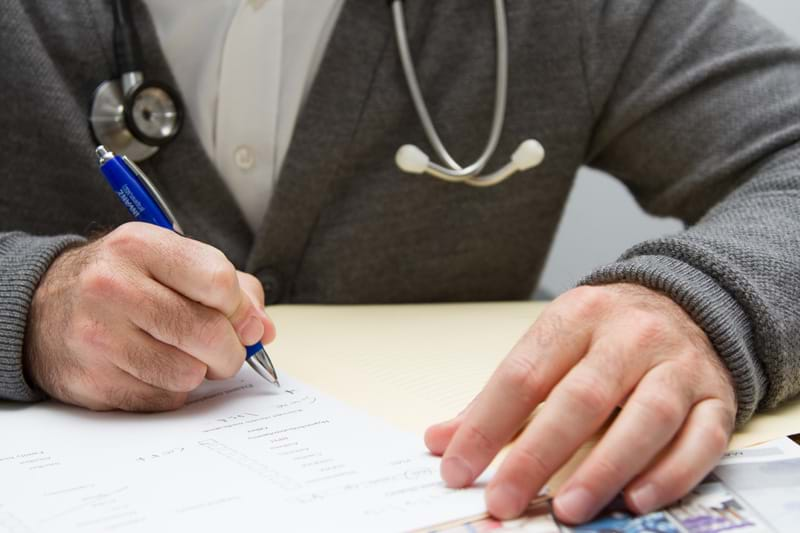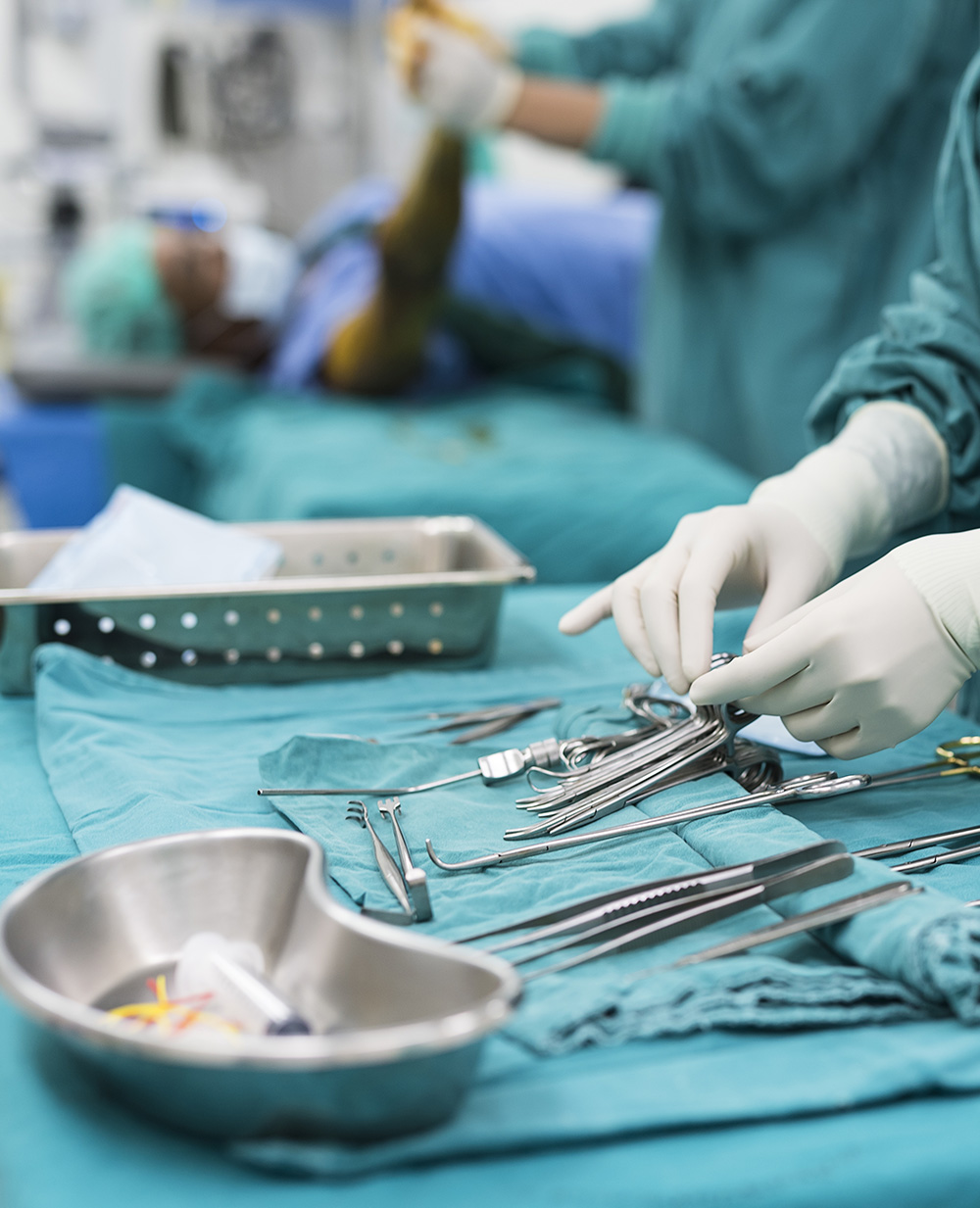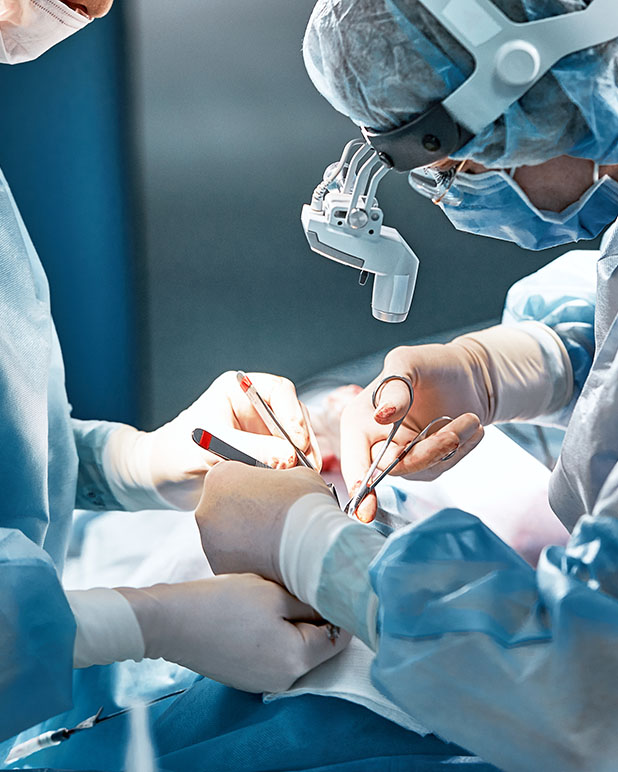-

Dr Anthony Steven Jackson
Specialist General Surgeon and Endoscopist
Meet Dr Jackson
Specialist General Surgeon and Endoscopist
Meet Dr Jackson
Specialist General Surgeon and Endoscopist

Dr Anthony Steven Jackson obtained his MB ChB Degree at the University of Cape Town in 1992, before qualifying as a surgeon in 1999 and opening his private practice at the Christiaan Barnard Memorial Hospital in the year 2000.
Dr Jackson combines the latest techniques and technology with an unparalleled level of skill to provide his patients with the platinum level of care that they deserve. He is fully committed to providing the best surgical care in minimally invasive, invasive, as well as traditional procedures. Using advanced treatment techniques, Dr Jackson attempts to minimize complications and recovery time for all his patients.
Dr Jackson and his team of surgeons have a unified philosophy, which is to treat all their patients the same way that they would treat their family, and help patients feel comfortable and achieve the gratifying results that they deserve. From the moment you step into Dr Jackson’s practice, you are guaranteed to receive the highest level of care. His team are willing to work according to your schedule to ensure that a simple process is followed without unfair time constraints being placed on your busy life.
Procedures
-
Gastroscopy
Gastroscopy
A gastroscopy is a procedure used to examine the inside of the gullet (oesophagus), the stomach, as well as the first part of the small intestine – known as the duodenum. With a gastroscopy, we are able to look into the upper part of the gastrointestinal tract with a thin, flexible telescope.
A gastroscopy may be recommended when you are experiencing symptoms such as:
- Repeated indigestion.
- Recurring heartburn.
- Pain in the upper abdomen.
- Repeated regurgitation.
- Difficulty swallowing.
There are many types of conditions that may be confirmed or ruled out with a gastroscopy.
These conditions include:
- nflammation of the oesophagus, called oesophagitis. We will see areas of redness on the lining of the oesophagus.
- Stomach and duodenal ulcers. An ulcer looks like a small, red crater on the inside lining of the stomach or on the first part of the small intestine.
- Inflammation of the duodenum and inflammation of the stomach.
- Stomach and oesophageal cancer.
- Various other rare conditions.
Patients who undergo gastroscopy are not required to stay in hospital overnight. This test takes around 10 minutes to perform, but you allow at least 2 hours for your whole appointment to prepare for the procedure and to give the sedative time to work.
When preparing for your appointment, please ensure that you:
- Do not eat for 6 hours prior to the gastroscopy. You may be allowed to take small sips of water up to two hours before the test.
- Do not consume any medication prior to your test.
- Ask someone to accompany you home, as you will be sedated.
-
Colonoscopy
Colonoscopy
A colonoscopy is a procedure whereby we are able to examine the inner lining of the large intestine, through the use of a thin, flexible tube known as a colonoscope. A colonoscopy helps us detect ulcers, colon polyps, tumours and areas of inflammation or bleeding. We can also collect tissue samples and remove abnormal growths during a colonoscopy. Colonoscopy can also be used as a screening test to check for cancer or precancerous growths called polyps in the colon or rectum.
A small video camera is attached to the colonoscope so that we can take pictures or videos of the large intestine. The colonoscope can be used to look at the entire colon and the lower part of the small intestine.
Preparation for a colonoscopy takes between one and two days depending on the type of colonoscopy that has been recommended for your specific needs. Many patients find that the preparation for the colonoscopy is worse than the colonoscopy itself, as the bowel prep and clear liquid diet may be slightly uncomfortable. Schedule two days to stay at home during preparation, as you will be required to use the bathroom very often. The colon preparation causes loose, frequent stools and diarrhoea in order to empty the colon prior to the test.
Colonoscopy is one of many tests that may be used to screen for colon cancer. Other tests include sigmoidoscopy, stool tests, and computed tomographic colonography. Which screening test you choose depends on your risk, your preference, and your doctor. Talk to us about the best test for you.
-
Laparoscopic Cholecystectomy
Laparoscopic Cholecystectomy
Laparoscopic cholecystectomy – or gallbladder removal – is one of the most common minimally invasive surgical procedures. Although the main purpose of the gallbladder is to aid in digestion, the removal of the gallbladder is not associated with any impairment of digestion in most people.
Gallbladder problems are usually caused by the presence of small, hard gallstones. Gallstones affect more women than men, and is more common as you get older. These stones may block the flow of bile out of the gallbladder, causing it to swell and resulting in sharp abdominal pain, vomiting, indigestion and, occasionally, fever. If the gallstone blocks the common bile duct, jaundice (a yellowing of the skin) can occur.
Gallstones do not go away on their own. Some can be temporarily managed by making dietary adjustments, such as reducing fat intake. This treatment has a low, short-term success rate. Symptoms will eventually continue unless the gallbladder is removed. Treatments to break up or dissolve gallstones are largely unsuccessful. Therefore, the surgical removal of the gallbladder is recommended.
Laparoscopic cholecystectomy has many advantages, including:
- Patients usually have minimal post-operative pain.
- Patients usually experience faster recovery than open gallbladder surgery patients.
- Rather than a five to seven inch incision, the operation requires only four small openings in the abdomen.
- Most patients go home the same day of the surgery and enjoy a quicker return to normal activities.
Although there are many advantages to laparoscopic gallbladder removal, the procedure may not be appropriate for some patients who have severe complicated gallbladder disease or previous upper abdominal surgery. A thorough medical evaluation by your personal physician, in consultation with a surgeon trained in laparoscopy, can determine if laparoscopic gallbladder removal is an appropriate procedure for you.
-
Hernia Operations – Open & Laparoscopic
Hernia Operations – Open & Laparoscopic
Hernias can affect anyone at any age or physical condition. It can be present at birth or develop as a result of aging or injury. There are many types of hernias that can occur in different parts of the body. An incarcerated hernia is the most life threatening of all hernias, as it obstructs movement through the digestive tract, causing severe pain, nausea and vomiting. It can also cause a strangulation of an internal organ by cutting off the blood supply, leading to potential death if emergency surgery is not sought after.
A hernia does not get better by itself, nor does it go away without surgery. Hernia repair surgeries are required, and it involves the implantation of a mesh in the weakened area on the abdominal wall. This helps to strengthen the tissue and protect against future protrusions, and can be done through traditional open surgery, or laparoscopic techniques.
Laparoscopic hernia operations are performed through small incisions near the belly button. This typically leads to better outcomes than traditional open surgery because blood loss and discomfort are minimized, as well as trauma to surrounding tissue. Laparoscopic surgery is often indicated for the repair of a recurrent hernia or in cases where there is a possibility of a second hernia developing. This type of minimally invasive hernia repair does not require an overnight hospital stay.
For open hernia repair surgery, one incision is made in the groin. If the hernia is bulging out of the abdominal wall, the bulge is pushed back into place. If the hernia is going down the inguinal canal, the hernia sac is either pushed back or tied off and removed.
-
Breast & Thyroid Surgery
Breast & Thyroid Surgery
Breast problems can be associated with benign or malignant causes. Dr Jackson provides consultations on inflammatory breast conditions such as mastitis (infection of the breast) and abscess formation, breast pain, breast cysts, fibro adenomas and other benign tumours of the breast. Depending on the situation, non-cosmetic breast surgery may be done for different reasons, including:
- Breast-conserving surgery or mastectomy
- Find out whether the cancer has spread to the lymph nodes under the arm
- Restore the breast’s shape after the cancer is removed
- Relieve symptoms of advanced cancer
The thyroid gland conceals that hormone that regulated the metabolism, known as thyroxine. As with breast conditions, thyroid conditions may also be benign or malignant. Symptoms associated with thyroid disease may be causes by hyperthyroidism, hypothyroidism or nodule or tumour formation. Although surgery may not be necessary for all patients, partial or total thyroidectomy –surgery performed to remove the thyroid gland may be performed and will require an overnight hospital stay.
There are two kinds of thyroid surgery: Hemithyroidectomy and a thyroidectomy.
A hemithyroidectomy is a minimally invasive procedure that is used to remove half of the thyroid gland. This procedure becomes necessary when:
- A thyroid gland rapidly enlarges.
- The large thyroid nodule causes obstructive symptoms or disfigurement.
A thyroidectomy is that removal of the whole thyroid gland. This procedure is often performed through an incision made in the base of the neck, and is indicated in the following situations:
- Thyroid cancer
- Abnormal biopsy result
- Graves’ disease
- Large thyroid gland that causes obstruction of your airway or swallowing difficulty
The risks and complications of thyroidectomy are rare, with less than 2% of patients reporting the following:
- Voice changes or voice loss from recurrent laryngeal nerves injury
- Hypocalcaemia or low calcium level
- Bleeding or wound complications
-

Emergency Operations
-
Appendix
The surgical removal of the appendix – an appendectomy – is a common emergency procedure that is performed to treat appendicitis, the inflammation of the appendix.
The appendix is a tube-shaped pouch located in the lower right side of your abdomen.
When the appendix becomes inflamed and swollen, bacteria can multiply and lead to the formation of pus inside the organ. The build-up of bacteria and pus can cause pain around the belly button to the right section of the abdomen. The pain is worsened by walking and coughing, and may cause nausea, vomiting and diarrhoea.
If you are experiencing symptoms of appendicitis, it is important to seek treatment right away, as the appendix can burst , causing bacteria and other harmful substances to spread into the abdominal cavity. This could be life-threatening. Therefore, it is crucial to remove the appendix right away.
An appendectomy is the standard treatment for appendicitis, and once this procedure is performed, most patients are able to recover quickly without complications.
Call: +27 (0)21 422 0002
-
Bowel Obstruction

A bowel obstruction occurs when the passageway for food, fluid and gas to move through the bowel or intestine is partially or completely blocked.
The bowel is a hollow tube that transports digested food waste from the stomach to the anus. There are two sections to the bowel: the small bowel - also called the small intestine - which is where the nutrients in the food are digested and absorbed; and the colon and rectum form the large bowel -or large intestine - which absorbs water from the digested food, forming it into stools that are passed out of the anus.
When undigested food, fluids and digested secretions are obstructed and accumulate above the blockage, the bowel section involved in the blockage becomes distended , compromising the normal function of the bowel wall. Many hospital admissions for acute abdominal pain are due to a bowel obstruction and many of these occur in the small intestine.
There are a number of causes that could be responsible for a bowel obstruction, both mechanical and non-mechanical. These include:
- Impacted stools from severe constipation
- Diseases that affect the intestinal wall such as Crohn's disease or diverticular disease or adhesions from previous surgery
- Gallstones
- A swallowed item
- Intussusception, where part of the intestine folds in on itself or even hernias
- Congenital malformation of the bowel
Call: +27 (0)21 422 0002 -
Pancreatitis
The pancreas is the large gland behind the stomach next to the small intestine that releases powerful digestive enzymes into the small intestine to aid the digestion of food. It also releases the hormones insulin and glucagon into the bloodstream to help the body control how it uses food for energy.
Pancreatitis is a disease in which the pancreas becomes inflamed or damaged due to the activation of the digestive enzymes before they are released into the small intestine. This causes the enzymes to attack the pancreas.
There are two forms of pancreatitis: acute and chronic.
Acute pancreatitis , often caused by gall stones or an alcohol binge is a sudden inflammation of the pancreas that lasts for a short period of time. It may cause mild discomfort or become a severe, life-threatening illness. In more severe cases, acute pancreatitis may result in the bleeding of the gland, serious tissue damage, an infection or the formation of cysts. Severe pancreatitis can also harm other vital organs such as the heart, lungs, and kidneys.
Chronic pancreatitis is the long-lasting inflammation of the pancreas that often occurs after an episode of acute pancreatitis. Patients have reported a feeling of constant pain in the upper abdomen that radiates to the back. In some patients, the pain may even be disabling
Call: +27 (0)21 422 0002